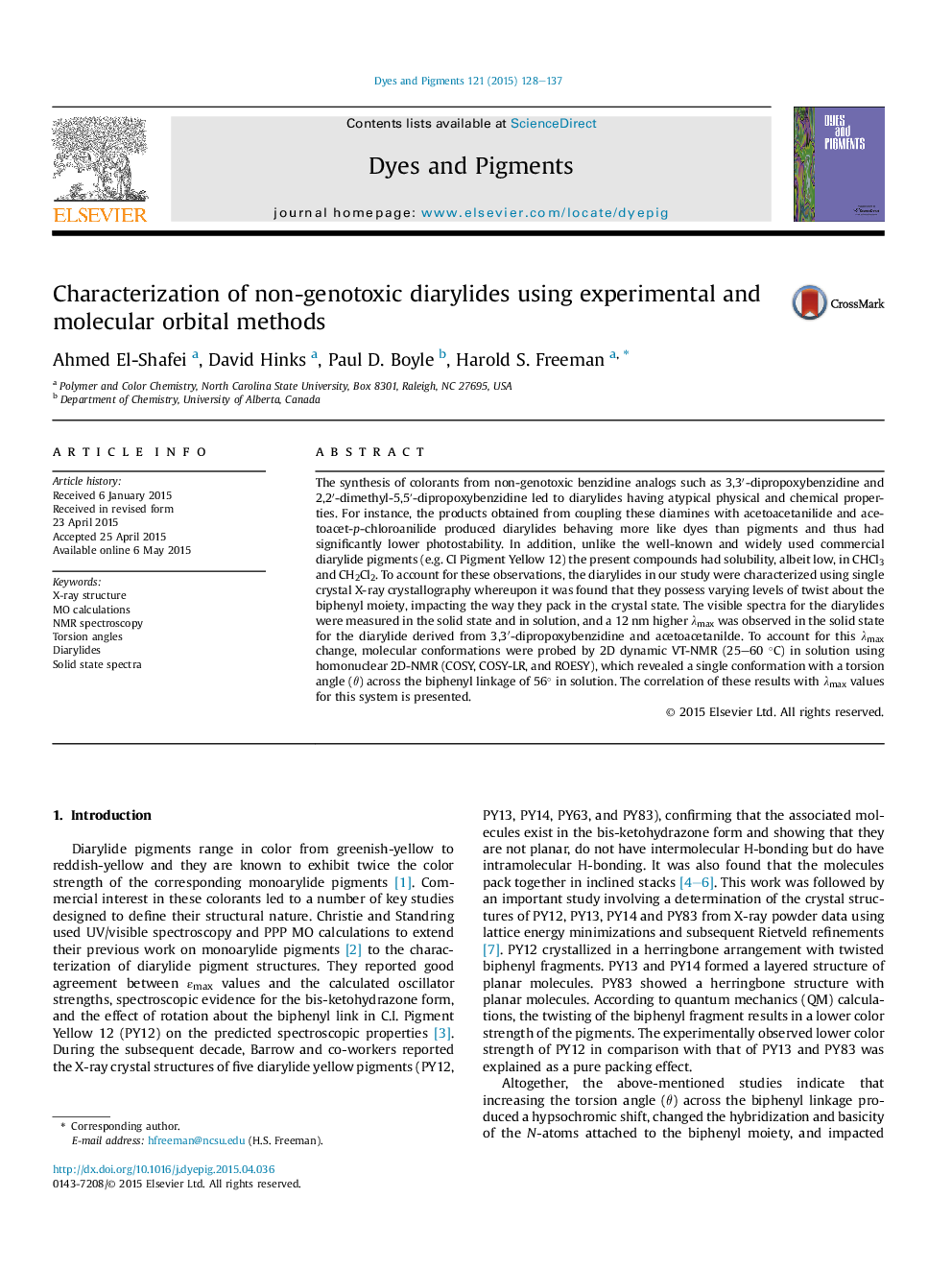| کد مقاله | کد نشریه | سال انتشار | مقاله انگلیسی | نسخه تمام متن |
|---|---|---|---|---|
| 175564 | 458914 | 2015 | 10 صفحه PDF | دانلود رایگان |
• The X-ray structure of a diarylide from a twisted benzidine had molecules in a cross-hair pattern.
• Conformational analysis of a dipropoxybenzidine-based diarylide was conducted using 2D NMR.
• Equilibrium molecular geometries of diarylides were calculated using DFT-based MO methods.
The synthesis of colorants from non-genotoxic benzidine analogs such as 3,3′-dipropoxybenzidine and 2,2′-dimethyl-5,5ʹ-dipropoxybenzidine led to diarylides having atypical physical and chemical properties. For instance, the products obtained from coupling these diamines with acetoacetanilide and acetoacet-p-chloroanilide produced diarylides behaving more like dyes than pigments and thus had significantly lower photostability. In addition, unlike the well-known and widely used commercial diarylide pigments (e.g. CI Pigment Yellow 12) the present compounds had solubility, albeit low, in CHCl3 and CH2Cl2. To account for these observations, the diarylides in our study were characterized using single crystal X-ray crystallography whereupon it was found that they possess varying levels of twist about the biphenyl moiety, impacting the way they pack in the crystal state. The visible spectra for the diarylides were measured in the solid state and in solution, and a 12 nm higher λmax was observed in the solid state for the diarylide derived from 3,3′-dipropoxybenzidine and acetoacetanilde. To account for this λmax change, molecular conformations were probed by 2D dynamic VT-NMR (25–60 °C) in solution using homonuclear 2D-NMR (COSY, COSY-LR, and ROESY), which revealed a single conformation with a torsion angle (θ) across the biphenyl linkage of 56° in solution. The correlation of these results with λmax values for this system is presented.
Journal: Dyes and Pigments - Volume 121, October 2015, Pages 128–137
